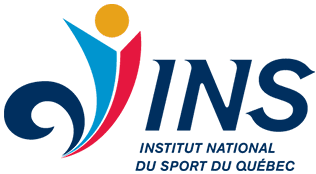Can artificial intelligence tools predict an athlete’s performances and lower the risk of sports injuries? That’s the question the Institut national du sport du Québec (INSQ) recently decided to tackle.
The Montréal-based non-profit organization provides supervision and support to hundreds of high-level athletes. Their performances are examined in microscopic detail, with all sorts of measurements regularly taken to assess their strength, movements, or state of health. These biomechanical metrics, along with physiological and psychological data, are then compiled into extensive databases.
How can these plentiful and varied data be exploited? The challenge is a daunting one: at the Olympic and Paralympic level, podium finishers are often separated from the rest of the field by the tiniest of margins. Hence the growing interest worldwide in applying artificial intelligence (AI) techniques to sports competition. The resulting technical and medical support provided to athletes can be invaluable.
The Institute therefore sought out Maxime Raison, a professor in the Department of Mechanical Engineering at Polytechnique Montréal and an expert in application of AI to the analysis of movement and performance. He and his team of doctoral researchers in engineering, including Sana Raouafi, PhD, and Luis Antonio Pereira de Lima, PhD, focused on three disciplines—short-track speed skating, para-swimming, and para-cycling—and tested two methods of AI-powered data processing. They developed algorithms that enabled them to rapidly analyze a large number of indicators.
“Artificial intelligence is like a whistleblower sounding an alarm, which then requires more in-depth analysis. Properly applied, it could ensure systematic conducting of basic evaluations, which for budgetary reasons usually can’t be done.”
Maxime Raison
Professor, Department of Mechanical Engineering, Polytechnique Montréal
Unfortunately, these methods yielded no conclusions for two of the disciplines under study, because of disparities and irregularities in the data collected. Those shortcomings meant that the certainty coefficients were too weak to enable any conclusions to be drawn. “But we at least demonstrated the degree of effort necessary to arrive at a sound database,” Professor Raison notes, alluding to the fact that another goal of the project was to identify whether the measurements taken were suitable for AI or not, with an eye to improving and harmonizing exemplary practices based on concrete knowledge.
The team of researchers therefore focused efforts on the para-swimming data, whereby they proved that AI could indeed predict athletes’ performance level more rapidly and accurately than coaches could. “The databases have to follow,” Professor Raison explains. “The more robust the databases, the more accurate the predictions will be.”
The team was unable to fully achieve the injury-risk-prediction objective, however. The results of this preliminary trial nonetheless confirm the potential for harnessing AI for this type of application. Once again, it was a lack of data that prevented the team from obtaining reliable results: coaches generally record only major injuries, of the kind that put an end to an athlete’s season, whereas only a proper, systematized history of injuries would produce exploitable results.
Professor Raison believes AI remains a decision-support tool, as nothing can replace a coach’s critical thinking: “It eliminates human bias in the analysis process, but the coach has to maintain that flexibility along with the choice of which characteristics they want to consider or ignore.”
The researcher remains confident about the many possibilities that artificial intelligence offers in the world of sport: “Applied to computer vision, AI could detect objects and calculate, for example, the trajectory of a water polo ball. That calculation would allow a coach to identify the difference between a good shot and a poor one, improving players’ strikes and, in turn, the team’s results.”
